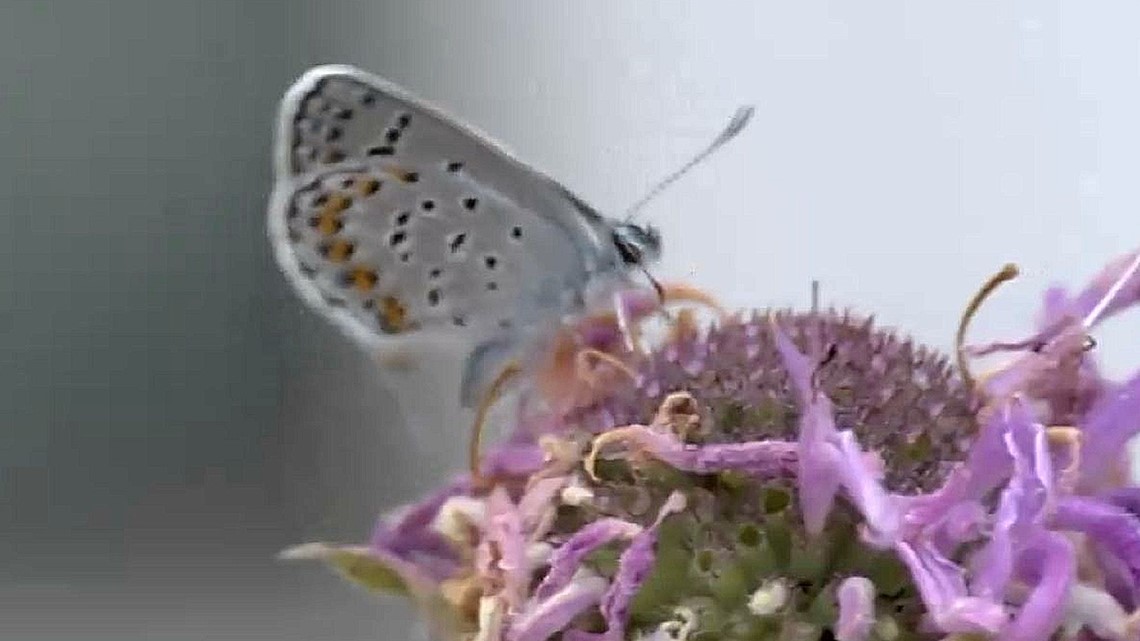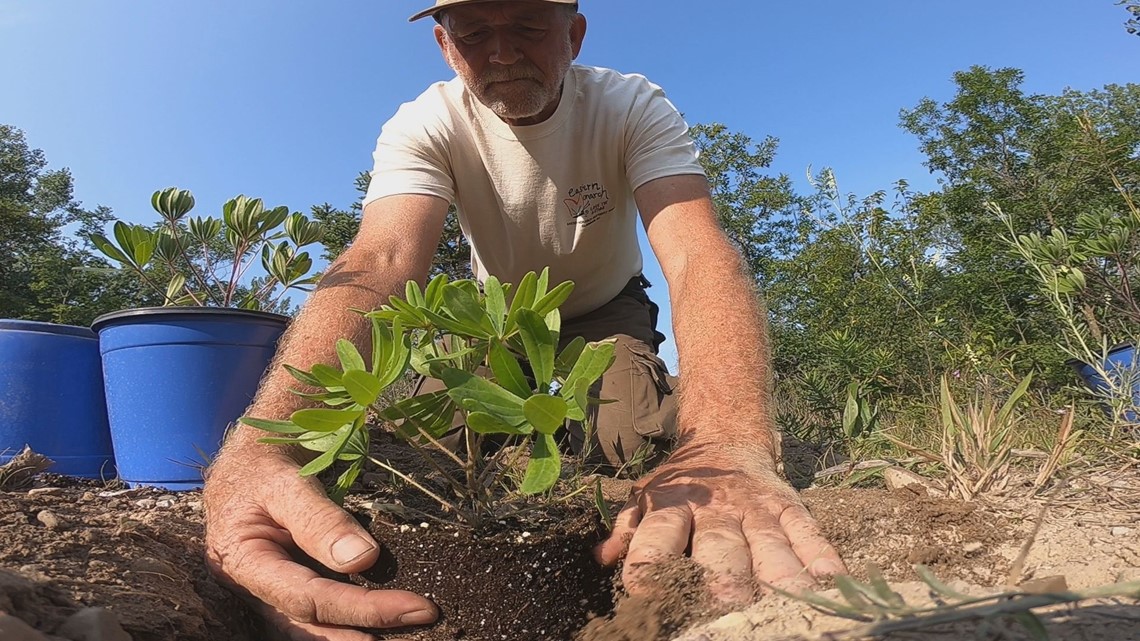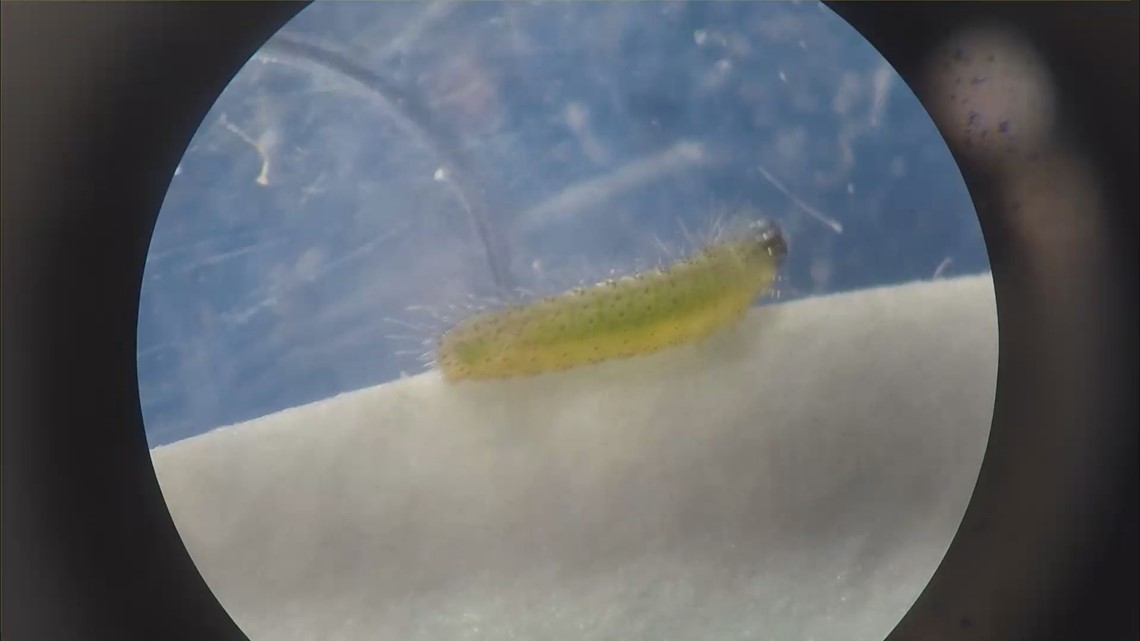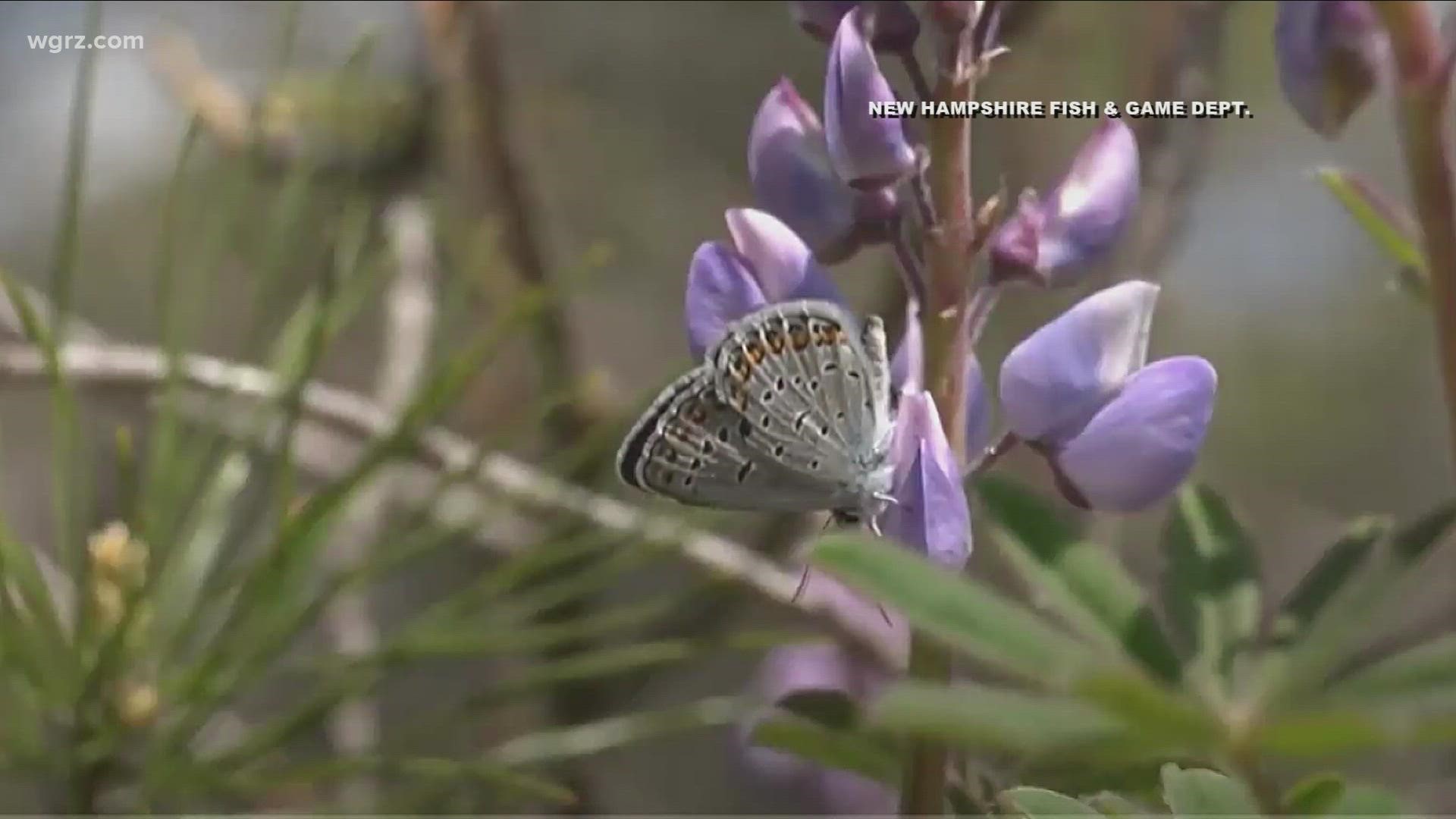CLARENCE, N.Y. — "Everything's connected, the cause and effect. One thing disappears, it's going to have an effect somewhere down the line. You might not see it right away," said David O'Donnell, founder of the Eastern Monarch Butterfly Farm.
It's an environmental lesson that's been taught many times but has been often forgotten and seems doomed to repeat itself.
The plight of the Karner blue butterfly is yet another warning about the fragility of nature. Their numbers have dropped precipitously during the past two decades.
"It is down 99 percent, which is pretty high. There are about six or seven states where you can find pockets of Karner blues, and New York, is one of them. We have one down in Albany in the Pine Barren region, the Pine Bluffs. So what we'd like to do is try to get a habitat and a population going right here," O'Donnell said.


Loss of habitat is the prime reason for the butterflies' decline, but further than that, their collapse has been caused by the loss of the wild lupine, a plant that is essential to the Karner blue's existence.
O'Donnell and his volunteers at Eastern Monarch Butterflies are planting wild lupines at the Tillman Road Wildlife Management Area in Clarence in an effort to begin restoration of both habitat and butterflies.
"We'll be planting 50 or 60, but we're only going to do maybe 20 today. Then through the next couple of weeks, we'll be doing some more, reaching out, and then I'm going to see where they're doing the best because these will self-seed eventually. What we'd like to do is get an area where there's a lot of lupine," O'Donnell said.


More will be planted next year, and O'Donnell says that once the plants are established, the next step involves the butterflies themselves.
"Then we'll talk about getting the permit to get larvae, but the first step is to see how the lupine goes and to get a good stand going here," O'Donnell said.


Then soon the Karner blue butterfly will return to Western New York for future generations to marvel at and learn from and serve a reminder of both the interdependence and the resilience of nature.
"I know it's a small blue butterfly, and people say, 'Well what the heck? What's the difference?' We've got plenty of other butterflies," O'Donnell said. "But that's the beginning of a decline of a species, or society, like us. It starts with the small things, not the big things."
To learn more about the Eastern Monarch Butterfly Farm, click here.

